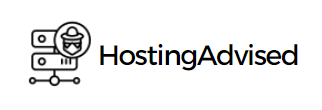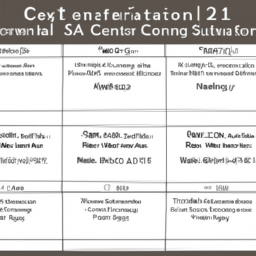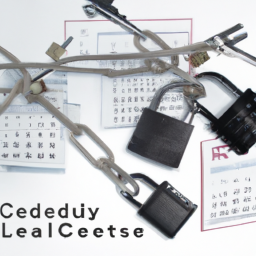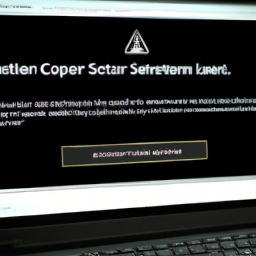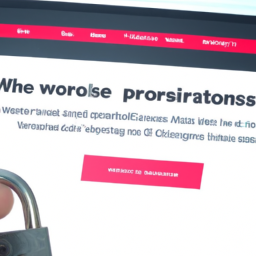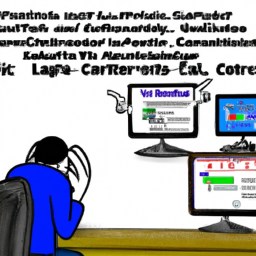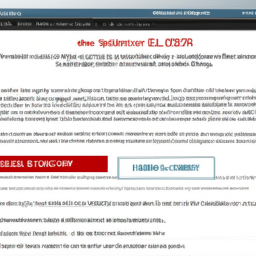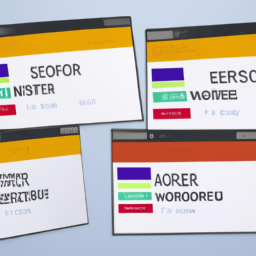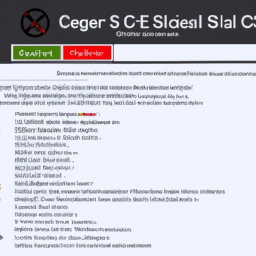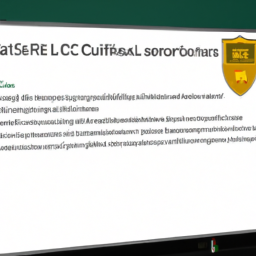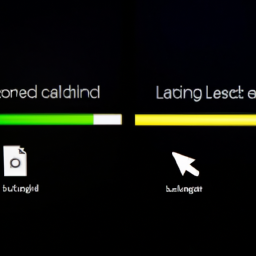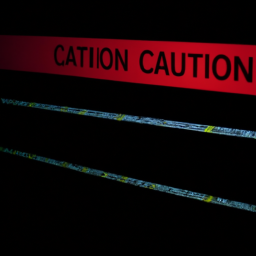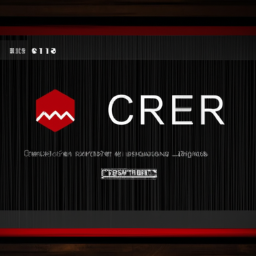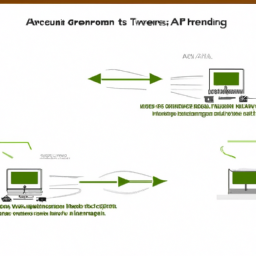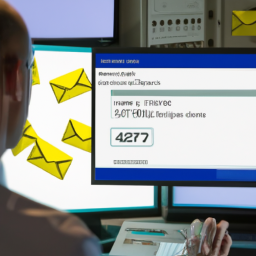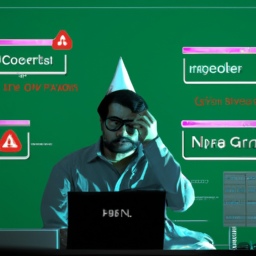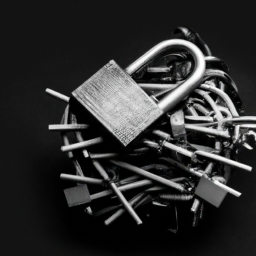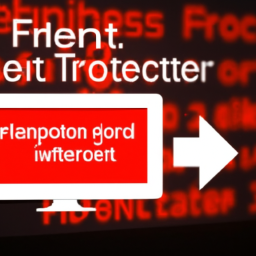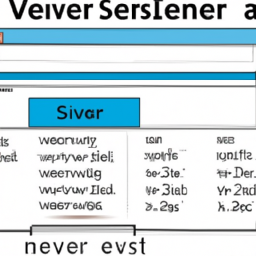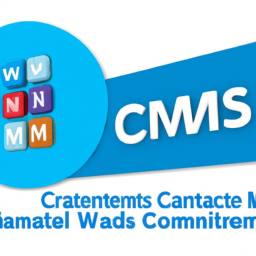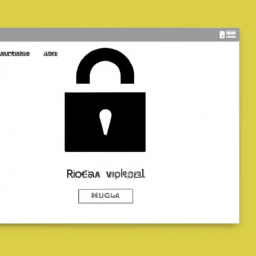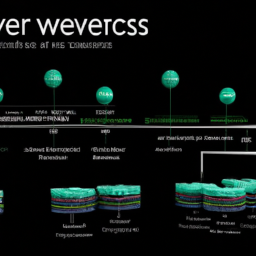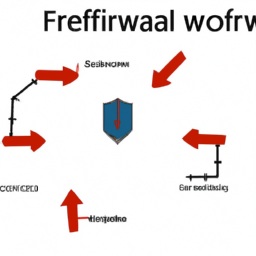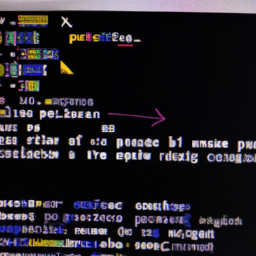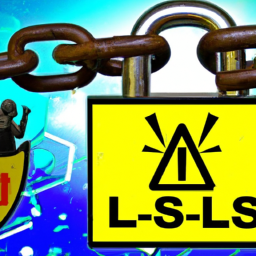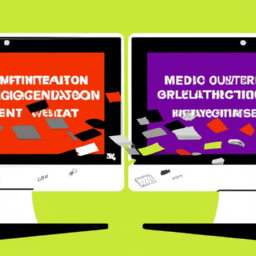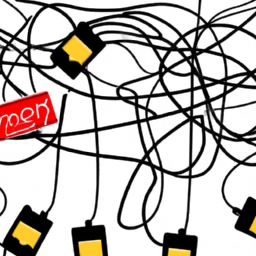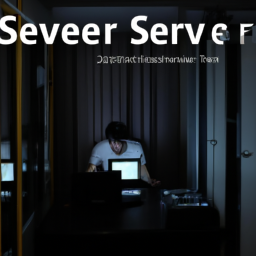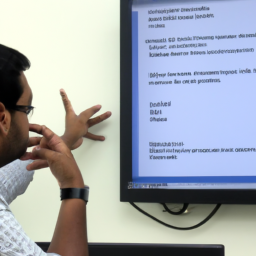Are you tired of dealing with SSL certificate renewal failures? You’re not alone.
Imagine this scenario: You’re running a successful e-commerce website, and your SSL certificate is about to expire. You go through the process of renewing it, but to your dismay, the renewal fails. Your website is now at risk of displaying security warnings to your customers, potentially leading to lost sales and a damaged reputation.
In this article, we will delve into the common causes of SSL certificate renewal failures and provide you with troubleshooting tips and tricks to overcome them. Whether you’re experiencing issues during the renewal process or encountering problems with certificate installation, we’ve got you covered.
We’ll also explore how to seek support from Certificate Authorities (CAs) and share preventive measures to avoid future renewal failures.
Don’t let SSL certificate renewal failures hinder your online success. Let’s dive in and empower you with the knowledge to troubleshoot and resolve these issues effectively.
Key Takeaways
- SSL certificate renewal failures can lead to security warnings and damage to a website’s reputation.
- Troubleshooting SSL errors and SSL handshake issues is important for a successful renewal.
- Checking the expiration date of the certificate, verifying CA compatibility, and double-checking server configuration are key steps in troubleshooting the renewal process.
- Seeking support from Certificate Authorities (CAs) can help resolve renewal failures.
Common Causes of SSL Certificate Renewal Failures
One of the most common causes of SSL certificate renewal failures is expired or invalid domain validation. When the domain validation for an SSL certificate expires or becomes invalid, it can lead to various SSL errors during the renewal process. Troubleshooting SSL errors and SSL handshake issues is crucial to ensure a successful renewal.
Incorrectly configured DNS settings, expired or revoked SSL certificates, or issues with the certificate authority’s validation process can all contribute to domain validation failures. To troubleshoot these issues, you can start by checking the DNS records for the domain, ensuring that the SSL certificate is still valid and not revoked, and contacting the certificate authority for further assistance.
By addressing these common causes of SSL certificate renewal failures, you can successfully navigate the troubleshooting process and ensure a smooth renewal of your SSL certificate.
Troubleshooting the Renewal Process
To troubleshoot the renewal process for SSL certificates, there are a few key points you should keep in mind.
First, always check the expiration date of your certificate to ensure it hasn’t already expired.
Additionally, verify that your certificate authority (CA) is compatible with your server and its configuration.
Lastly, double-check your server configuration to ensure all settings and requirements are met for a successful renewal.
By following these steps, you can effectively troubleshoot any issues that may arise during the SSL certificate renewal process.
Check Certificate Expiration Date
Make sure you’re aware of when your SSL certificate expires to prevent any renewal failures. To avoid issues, it’s crucial to regularly check the certificate expiration date. Here are three important points to consider:
-
Use SSL certificate revocation checking tools to verify the current status of your certificate. This will help identify any potential problems that may hinder the renewal process.
-
Troubleshoot SSL errors promptly by checking the expiration date of the SSL certificate. Expired certificates can cause various issues and can lead to renewal failures.
-
Keep track of the expiration date using a reliable monitoring system or tool. This will ensure that you don’t miss the renewal deadline and experience any disruptions to your website’s security.
Now that you’re familiar with the importance of checking the certificate expiration date, let’s move on to the next section about verifying certificate authority (CA) compatibility.
Verify Certificate Authority (CA) Compatibility
Ensure your website’s security by verifying if your chosen Certificate Authority (CA) is compatible with your SSL certificate. CA compatibility troubleshooting is essential to avoid SSL handshake failures and potential security risks. To help you with this, refer to the table below that outlines the compatibility between popular CAs and SSL certificate types. This information will assist you in selecting a CA that is compatible with your SSL certificate and ensure a successful SSL handshake. By verifying CA compatibility, you can prevent issues that may arise due to incompatible certificates and streamline the renewal process. Once you have confirmed the compatibility, you can proceed to the next step of troubleshooting: double-checking your server configuration.
Double-Check Server Configuration
Don’t overlook your server configuration – it’s crucial to double-check it for any potential issues or mistakes. Start by checking your firewall settings to ensure that they aren’t blocking any necessary communication for the SSL certificate renewal process.
Additionally, review the renewal process documentation provided by your Certificate Authority (CA) to ensure that you’ve followed all the necessary steps correctly. Pay attention to details such as the server’s hostname, IP address, and port configurations. Any incorrect information can lead to renewal failures.
Make sure that your server is reachable and accessible from the internet. Resolving certificate installation issues requires a thorough understanding of your server configuration. By ensuring that your server is properly configured and all necessary settings are in place, you can minimize the chances of encountering any installation issues in the subsequent section.
Resolving Certificate Installation Issues
To resolve certificate installation issues, it’s important to review the certificate installation steps carefully. Make sure that each step is followed correctly to ensure a successful installation.
Additionally, you should ensure that the correct certificate chain is used during the installation process, as an incorrect chain can lead to installation failures.
Finally, it’s recommended to test the installed certificate on different browsers and devices to ensure compatibility and functionality across various platforms.
Review Certificate Installation Steps
Take a moment to review the steps for installing the SSL certificate, as it’ll guide you through the process and help you avoid any potential issues along the way. Here are three key things to keep in mind while reviewing the certificate installation steps:
-
Review the certificate validation process: Make sure you’ve followed all the necessary steps to validate the certificate. This includes submitting the required documents and completing any verification processes.
-
Troubleshoot SSL errors: Familiarize yourself with common SSL errors and their solutions. This’ll help you quickly identify and resolve any issues that may arise during the installation process.
-
Ensure correct certificate chain: Verify that you’ve installed the correct intermediate and root certificates in the correct order. This ensures that the SSL certificate is trusted by all major web browsers.
By thoroughly reviewing the certificate installation steps, you’ll be better prepared to ensure a smooth installation process and avoid any potential issues.
Now, let’s move on to the next section and discuss how to ensure the correct certificate chain.
Ensure Correct Certificate Chain
Now that you have reviewed the steps for installing an SSL certificate, it is important to ensure that the correct certificate chain is in place. Troubleshooting certificate errors can be frustrating, but checking the intermediate certificate can often resolve the issue. An intermediate certificate is necessary to establish trust between the root certificate authority and your SSL certificate. Without the correct intermediate certificate, browsers may display an error message. To verify the intermediate certificate, you can use a tool like OpenSSL or consult your certificate provider’s documentation. Make sure that the intermediate certificate is correctly installed on your server and that it is linked to your SSL certificate. Once you have confirmed the correct certificate chain, you can move on to the next step of testing your certificate on different browsers/devices.
Test Certificate on Different Browsers/Devices
Once you’ve ensured the correct certificate chain, it’s time to put your SSL certificate to the test on various browsers and devices.
Testing certificate compatibility is crucial to ensure that your website is accessible to all users. Different browsers and devices may have different requirements and configurations that can affect the compatibility of your SSL certificate.
By testing your certificate on popular browsers like Chrome, Firefox, Safari, and Edge, as well as on different devices such as desktops, laptops, tablets, and smartphones, you can identify any potential issues and troubleshoot browser compatibility problems.
This step is essential to guarantee a seamless and secure browsing experience for all users. It’s important to thoroughly test your certificate compatibility before moving on to seeking support from certificate authorities (CAs) to address any remaining issues.
Seeking Support from Certificate Authorities (CAs)
Reaching out to Certificate Authorities (CAs) for support can be incredibly helpful in resolving SSL certificate renewal failures, leaving you feeling confident and relieved. When seeking support from CAs, consider the following troubleshooting techniques:
-
Provide detailed information: Clearly communicate the specific issue you’re facing, including error messages and any steps you’ve already taken.
-
Share logs and screenshots: These can help CAs identify the root cause of the problem and provide more targeted assistance.
-
Check for known issues: Before reaching out, consult the CA’s website or support forums to see if the issue you’re experiencing is a known problem with a documented solution.
-
Be patient and persistent: Resolving SSL certificate renewal failures may require ongoing communication with CAs, so don’t hesitate to follow up if necessary.
By seeking support from CAs and following these troubleshooting techniques, you can effectively resolve current SSL certificate renewal failures and prevent future ones.
Preventing Future Renewal Failures
To prevent future renewal failures, there are several key points to consider.
First, it’s essential to set reminders for certificate expiration dates to ensure timely renewal.
Secondly, regularly updating server configurations is crucial to maintain compatibility with updated certificate requirements.
Lastly, conducting routine certificate health checks helps identify any potential issues or vulnerabilities before they become problematic.
By following these steps, you can proactively manage your SSL certificates and avoid any renewal failures in the future.
Set Reminders for Certificate Expiration
Make sure you set reminders for when your SSL certificate is about to expire so that you can avoid any potential issues. One effective way to do this is by setting calendar events or reminders.
By adding these reminders to your calendar, you’ll have a visual representation of the certificate expiration date and be able to plan ahead. Additionally, automate notifications to be sent to you or your team members a few weeks before the expiration date. This’ll ensure that everyone is aware of the upcoming renewal and can take the necessary actions.
Once you’ve set reminders and automated notifications, the next step is to regularly update your server configuration to ensure a smooth renewal process.
Regularly Update Server Configuration
Ensuring your server configuration remains up to date is essential for a seamless and hassle-free renewal process. Here are four tips to help you keep your server configuration updated:
-
Update firewall settings: Regularly review and update your firewall settings to ensure they align with the latest security protocols. This will help prevent any potential issues or vulnerabilities that could affect the certificate renewal process.
-
Monitor server logs: Keep a close eye on your server logs to identify any errors or warnings related to the SSL certificate. This will allow you to address any issues promptly, minimizing any disruption to the renewal process.
-
Stay informed about software updates: Keep track of software updates for your server configuration components, such as the operating system, web server, and SSL/TLS libraries. Applying these updates in a timely manner will ensure compatibility and smooth certificate renewal.
-
Test the renewal process: Regularly test the SSL certificate renewal process to verify that your server configuration is functioning correctly. This will help you identify any potential issues in advance and take necessary steps to fix them.
By following these tips and keeping your server configuration up to date, you can ensure a smooth renewal process.
Next, let’s discuss how to conduct routine certificate health checks.
Conduct Routine Certificate Health Checks
To ensure the smooth operation of your SSL certificate, it’s crucial to regularly update your server configuration. However, that’s not the only step you should take. Conducting routine certificate health checks is equally essential.
Monitoring the health of your SSL certificate is of utmost importance as it helps detect any potential issues before they escalate into major problems. By regularly checking the certificate’s health, you can ensure that it’s functioning optimally, providing secure connections, and avoiding any unexpected certificate expirations.
To conduct effective certificate health checks, it’s recommended to follow best practices. These include using automated monitoring tools, checking certificate expiration dates, validating the certificate chain, and analyzing key metrics like certificate revocation status and configuration errors.
These practices will help you maintain a robust SSL certificate infrastructure.
Frequently Asked Questions
Can I renew my SSL certificate if it has already expired?
Yes, you can renew your expired SSL certificate. The SSL certificate renewal process involves obtaining a new certificate from a trusted Certificate Authority (CA). Common causes of SSL certificate expiration include the certificate’s validity period reaching its end or the certificate being revoked.
When renewing, you’ll need to generate a new CSR (Certificate Signing Request) and complete the verification process. Once approved, you can install the new certificate to secure your website.
What should I do if I receive an error message during the SSL certificate renewal process?
If you encounter an error message during the SSL certificate renewal process, there are a few troubleshooting steps you can take.
First, check for common causes such as incorrect domain validation or expired intermediate certificates.
Ensure your server’s date and time are accurate.
Verify that you have the necessary permissions and access rights.
If the error persists, consult the certificate authority’s documentation or contact their support for further assistance.
Is it possible to renew an SSL certificate issued by a different Certificate Authority (CA)?
Yes, it’s possible to renew an SSL certificate issued by a different Certificate Authority (CA). Renewing a certificate from a different CA has its pros and cons. The main advantage is that you can switch to a CA that offers better prices, features, or support.
However, the process may involve additional steps like generating a new private key and CSR. It’s important to carefully consider the implications and potential risks before switching CAs for certificate renewal.
How long does it usually take for a Certificate Authority to respond to a support request regarding SSL certificate renewal?
The average response time for a certificate authority to address a support request regarding SSL certificate renewal can vary. However, it typically ranges from a few hours to a couple of days.
Common reasons for delayed response include high volume of support requests, technical issues, and verification processes.
It’s important to provide all necessary information and follow the instructions provided by the certificate authority to expedite the renewal process.
Are there any specific steps I need to follow to prevent SSL certificate renewal failures in the future?
To prevent SSL certificate renewal failures in the future, it’s crucial to take proactive measures. Avoiding common renewal mistakes is essential.
First and foremost, ensure that all necessary documentation and information are up to date and accurate. Regularly monitor the expiration dates of your certificates and set up reminders for renewal.
Implement a comprehensive backup and recovery system to safeguard against data loss during the renewal process. Additionally, regularly update and patch your server software to prevent any issues that could arise during renewal.
Conclusion
Well, congratulations! You’ve made it through the maze of SSL certificate renewal failures. With these troubleshooting tips and tricks, you’ve become a master of unraveling the mysteries of the renewal process.
And let’s not forget the joy of resolving those pesky installation issues. Remember, seeking support from Certificate Authorities (CAs) is like finding a needle in a haystack. So, pat yourself on the back and revel in the irony of preventing future renewal failures.
Keep up the technical prowess, my friend, and may your SSL certificates always be renewed with ease.
